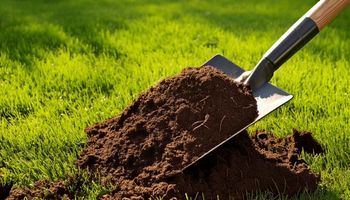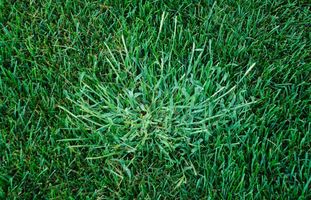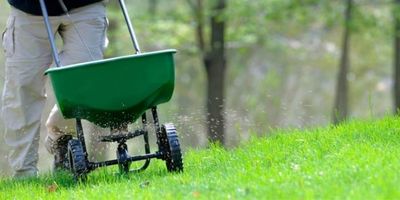Lawn Care & Fertilizer
Your Go-To Resource for Lawn Care Tips and Weed Control Strategies. Stay Informed with the Latest Insights on Keeping Your Lawn Healthy and Beautiful Year-Round."
The Ultimate Guide to Crabgrass
Identification, Prevention, and Control
Crabgrass is one of the most persistent and frustrating weeds for homeowners and gardeners. Its rapid growth and ability to spread quickly can turn a beautiful lawn into a patchy mess. In this guide, we’ll cover everything you need to know about crabgrass, from identifying it to preventing and controlling its spread.
What is Crabgrass?
Crabgrass is an annual grassy weed that thrives in warm weather, particularly in the summer. There are two common species of crabgrass: Large Crabgrass (Digitaria sanguinalis) and Smooth Crabgrass (Digitaria ischaemum). Both species are aggressive, with wide leaves that grow low to the ground and spread outward, forming dense mats.
How to Identify Crabgrass:
Identifying crabgrass early is key to controlling it before it takes over your lawn. Here are some characteristics to look out for:
- Leaf Shape: Crabgrass leaves are broader than most grass species, with a slightly coarse texture.
- Growth Pattern: Crabgrass grows in clumps, spreading outward in a starburst pattern. It tends to grow horizontally, allowing it to cover a large area.
- Color: The leaves are a lighter shade of green compared to most turfgrass species.
- Seed Heads: Crabgrass produces seed heads that resemble small, finger-like spikes. These seed heads are a primary source of its rapid spread.
Why is Crabgrass a Problem?
Crabgrass is not just an eyesore; it competes with your lawn for resources like water, sunlight, and nutrients. Once established, crabgrass can outcompete and crowd out desirable turfgrass, leading to a weakened lawn. Additionally, because crabgrass dies off in the fall, it leaves behind bare spots, making your lawn more vulnerable to erosion and further weed infestations.
Prevention: The Best Defense Against Crabgrass
Preventing crabgrass from taking root in your lawn is the most effective way to control it. Here’s how you can prevent crabgrass:
1. Apply Pre-Emergent Herbicides
Pre-emergent herbicides are your first line of defense against crabgrass. These products create a barrier in the soil that prevents crabgrass seeds from germinating. The key to success with pre-emergent herbicides is timing:
When to Apply: Apply pre-emergent herbicide in early spring, just before soil temperatures reach 55°F (13°C). This is typically when crabgrass seeds begin to germinate.
Reapplication: If you live in an area with a long growing season, you may need to reapply the herbicide mid-summer to prevent late-season germination.
2. Maintain a Healthy Lawn
A thick, healthy lawn is the best natural defense against crabgrass. Crabgrass struggles to establish itself in lawns with dense, well-maintained turf. Here’s how to keep your lawn healthy:
Mowing: Mow your lawn at the proper height for your grass type. For most cool-season grasses, this is about 3 inches. Taller grass shades the soil, making it harder for crabgrass seeds to germinate.
Watering: Water your lawn deeply and infrequently to encourage deep root growth. Shallow, frequent watering favors crabgrass.
Fertilization: Fertilize your lawn according to its needs. A well-fed lawn is better equipped to outcompete weeds like crabgrass.
3. Overseeding
Overseeding in the fall can help fill in bare spots and thicken your lawn, making it more difficult for crabgrass to establish the following spring.
Control: Managing an Existing Crabgrass Infestation
If crabgrass has already taken hold in your lawn, don’t worry—you can still take action to control it:
1. Post-Emergent Herbicides
Post-emergent herbicides are effective against crabgrass that has already germinated. These herbicides should be applied when crabgrass is young and actively growing:
Selective Herbicides: Use a selective herbicide that targets crabgrass without harming your lawn.
Timing: Apply in the early summer when crabgrass is small for the best results. Older, more established crabgrass is harder to kill.
2. Hand-Pulling
For small infestations, hand-pulling can be an effective way to remove crabgrass. Be sure to remove the entire plant, including the roots, to prevent regrowth.
3. Mowing and Mulching
Keep your lawn mowed at the recommended height to reduce the spread of crabgrass seeds. In garden beds, a thick layer of mulch can help prevent crabgrass from taking root.
Post-Control Measures
Once you’ve controlled crabgrass, it’s important to take steps to prevent it from returning:
Repair Bare Spots: After removing crabgrass, reseed any bare spots in your lawn to prevent new weeds from taking root.
Regular Lawn Care: Continue to maintain a healthy lawn with proper mowing, watering, and fertilization practices.
Final Thoughts
Crabgrass can be a formidable foe, but with the right strategies, you can keep it at bay and maintain a beautiful, healthy lawn. Remember, prevention is key—by keeping your lawn thick and healthy and using pre-emergent herbicides, you can stop crabgrass before it starts. And if it does manage to sneak in, there are plenty of options for controlling and eliminating it.
Understanding NPK Fertilizer
What It Is and How It Benefits Your Plants
If you’ve ever shopped for fertilizer, you’ve likely noticed the numbers on the packaging, usually something like 10-10-10, 20-10-5, or similar combinations. These numbers represent the NPK ratio, which is essential for understanding what nutrients the fertilizer provides to your plants. But what exactly is NPK, and how does each component contribute to plant growth? In this post, we’ll break down the basics of NPK fertilizer and explain how it helps your plants thrive.
What is NPK?
NPK stands for Nitrogen (N), Phosphorus (P), and Potassium (K), the three primary nutrients that plants need in large quantities to grow and remain healthy. These nutrients are crucial for various aspects of plant development, and they’re often referred to as the “big three” in plant nutrition.
The Role of Nitrogen (N)
Nitrogen is perhaps the most well-known of the three nutrients, and it plays a critical role in several key processes within plants:
- Leaf and Stem Growth: Nitrogen is essential for the production of chlorophyll, the pigment that gives plants their green color and enables them to photosynthesize. Photosynthesis is how plants convert sunlight into energy, which fuels growth, particularly in leaves and stems.
- Protein Production: Nitrogen is a building block of amino acids, which are the precursors to proteins. Proteins are crucial for cell structure and function, playing a role in almost every process within a plant.
When to Use Nitrogen-Rich Fertilizer:
- When you want to promote lush, green foliage, such as in lawns, leafy vegetables, and ornamental plants.
- During the early stages of plant growth, when leaves and stems are developing.
Signs of Nitrogen Deficiency:
- Yellowing leaves (especially older leaves).
- Stunted growth.
- Poor leaf development.
The Role of Phosphorus (P)
Phosphorus is vital for root development and the production of flowers, fruits, and seeds. It’s involved in several important processes:
- Energy Transfer: Phosphorus is a key component of ATP (adenosine triphosphate), the molecule that provides energy for many biochemical reactions in plants. This energy is necessary for various functions, including root growth and flowering.
- Root Development: Phosphorus supports strong root systems, helping plants absorb water and nutrients more effectively. This is particularly important in young plants and during periods of active root growth.
- Flowering and Fruiting: Phosphorus promotes the development of flowers and fruits, making it crucial for plants that produce flowers, fruits, or seeds.
When to Use Phosphorus-Rich Fertilizer:
- During planting or transplanting, to encourage strong root establishment.
- When you want to enhance flowering and fruit production, such as in flowering plants, fruit trees, and vegetables.
Signs of Phosphorus Deficiency:
- Poor root development.
- Delayed or poor flowering and fruiting.
- Purple or reddish tinges on leaves
(especially in younger plants).
The Role of Potassium (K)
Potassium is often referred to as the “quality nutrient” because it enhances the overall health and quality of plants. It plays a crucial role in:
- Water Regulation: Potassium helps regulate water balance within the plant, making it more drought-resistant and better able to withstand environmental stress.
- Disease Resistance: Potassium strengthens cell walls, improving a plant’s resistance to diseases and pests.
- Overall Vigor: Potassium contributes to overall plant vigor, improving the quality of fruits, flowers, and vegetables. It also supports enzyme activation, which is essential for various metabolic processes.
When to Use Potassium-Rich Fertilizer:
- To improve the quality and size of fruits and vegetables.
- When preparing plants for stressful conditions, such as drought or extreme temperatures.
- During the late stages of growth, to enhance the hardiness and overall health of the plant.
Signs of Potassium Deficiency:
- Yellowing or browning of leaf edges (leaf scorch).
- Weak stems and poor plant structure.
- Reduced resistance to disease and
environmental stress.
Choosing the Right NPK Ratio
When selecting a fertilizer, the NPK ratio should match the specific needs of your plants and the stage of growth they’re in. Here are a few general guidelines:
Balanced Ratios (e.g., 10-10-10, 20-20-20): These are all-purpose fertilizers that provide equal amounts of nitrogen, phosphorus, and potassium. They’re suitable for general garden use when plants need a balanced supply of all three nutrients.
High Nitrogen Ratios (e.g., 30-10-10): These fertilizers are ideal for promoting leafy growth in lawns, leafy vegetables, and ornamental plants.
High Phosphorus Ratios (e.g., 10-30-10): Choose these fertilizers for root development, flowering, and fruiting plants. They’re often used during planting or when you want to enhance blooms and fruits.
High Potassium Ratios (e.g., 5-10-30): These are beneficial for improving fruit and vegetable quality, boosting disease resistance, and helping plants cope with stress.
Final Thoughts
Understanding the NPK ratio and how each nutrient benefits your plants is key to successful fertilization. By choosing the right fertilizer for your plants’ specific needs, you’ll help them grow strong, healthy, and productive.
Remember, the right balance of nitrogen, phosphorus, and potassium can make all the difference in your garden’s success. Whether you’re looking to boost lush foliage, develop robust roots, or produce bountiful harvests, there’s an NPK fertilizer that’s just right for the job.



